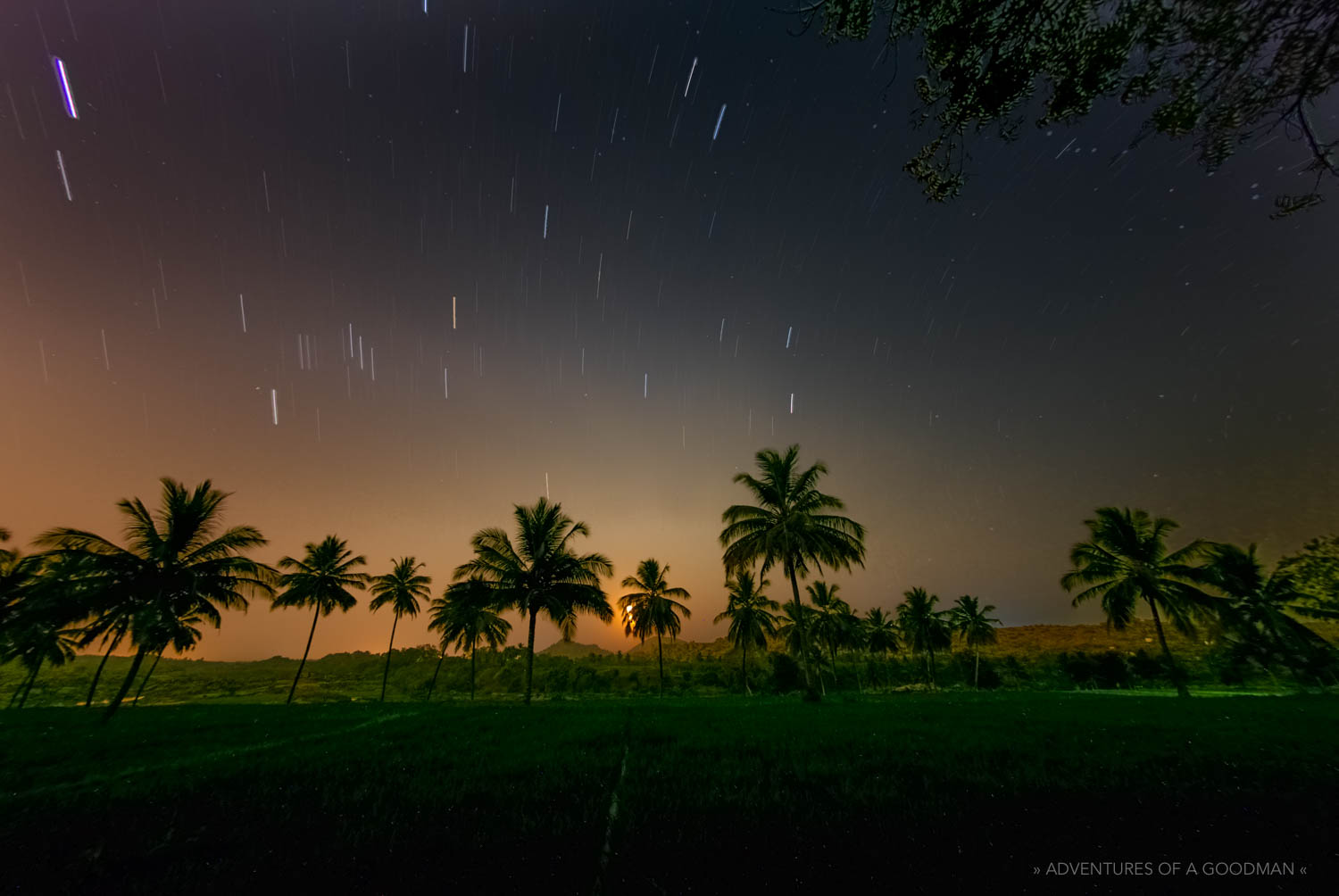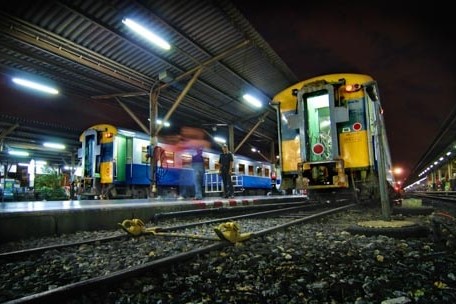Essentially two towns in one, the Hampi Bazaar area is a bustling tourist area with temples, countless overpriced hotels and shops and the feel of a large city. Most visitors stay here and are in and out in a day. The more adventurous, and those with more time, take a three minute boat ride across the river to Hampi Island, which is a tranquil and laid back sub-community with only one dirt street.

We checked into a room smaller than a cell block with only a bed (lumpy and thin doesn’t begin to describe it), a shelf and a fan that, along with all power on the island, worked for about 10 hours a day. Still, it cost $2.40 per day and the craptitude of the room forced us to get out and explore.
On our first night we watched the sunset from a rocky area in a field of rice patties. The next day we, along with some new friends, rented bikes and rode into the hills to swim in a reservoir (with danger signs warning of crocodiles) and then to the Hanuman (the monkey God) Temple where we climbed up 400 steps to watch the sunset surrounded by monkeys eating bananas given to them by fellow tourists.

While the days were fun, after three miserable nights in our cell block we moved to a new guesthouse (Arba Mistika) with a much bigger room, a shared cement patio, a friendlier environment and a giant tepee to hang out in. This worked out perfectly, as that morning Carrie got her first case of Delhi Belly and spent the next three days immobile.
We took our mattresses off the bed, set them up on the porch and covered the area with a mosquito net. While Carrie was on the mend I relaxed with her, caught up on writing, got to know the staff and fellow travelers at the Arba’s restaurant and wandered the street making friends with shopkeepers.

Despite countless hours of sleep, it was drinking crushed up charcoal from a burned log (based on a recommendation from a hippie) that finally made Carrie start to feel better. With her new lease on life we headed to the river to see an elephant get its daily bath before being escorted to a temple where, for one rupee, the elephant would bless you with its trunk. We both had to do it, of course.
The rest of the day was spent visiting other temples, wandering the bazaar and visiting what we were told was a waterfall. In fact, it was a large plateau of rocks with holes in them that you can sit in or jump through into the water below: far more impressive during monsoon season.
Finally, eight days after we arrived, Carrie and I said our goodbyes to Hampi and began our two day journey to Cochin.
EXPLORE SOMEWHERE NEW
BUY A PRINT
All photos on this site are available as limited edition fine art photographic prints. Please get in touch for sizes and rates.





